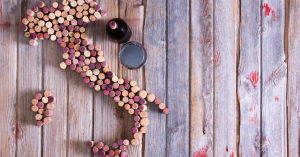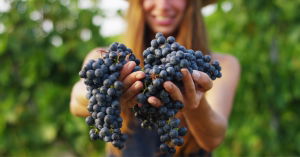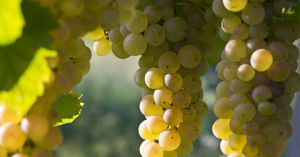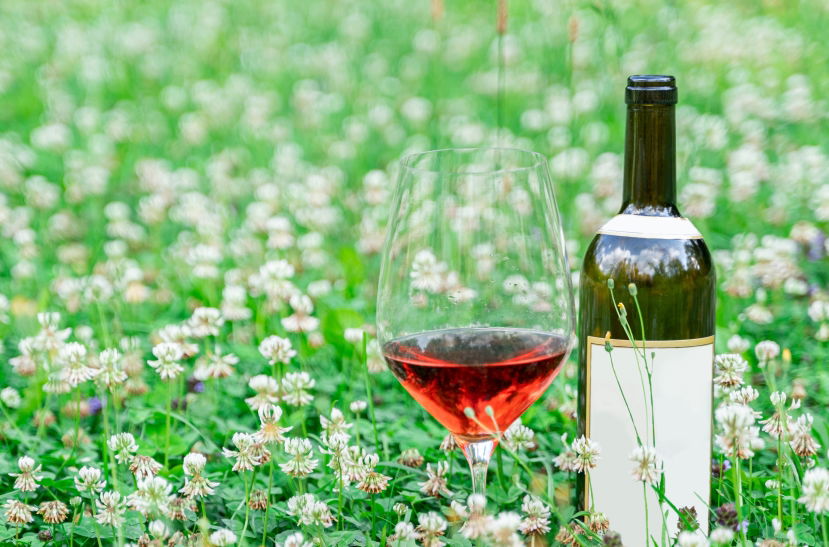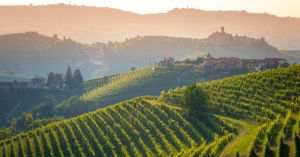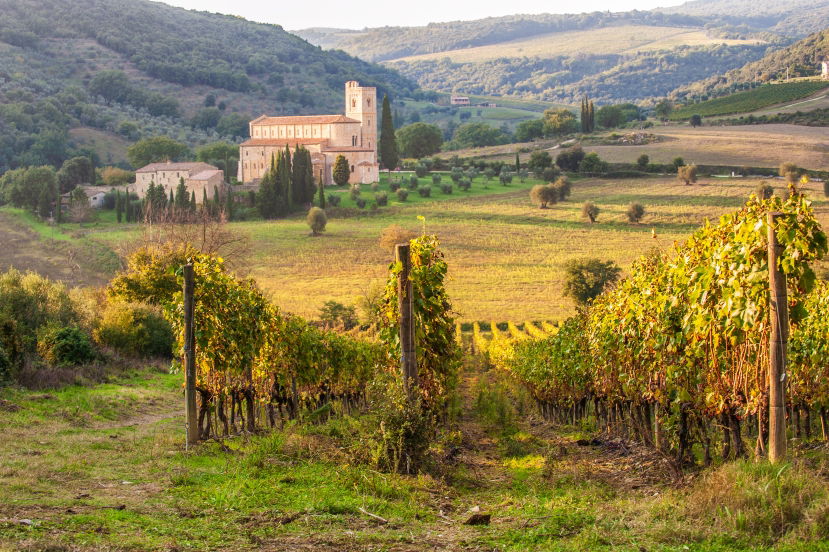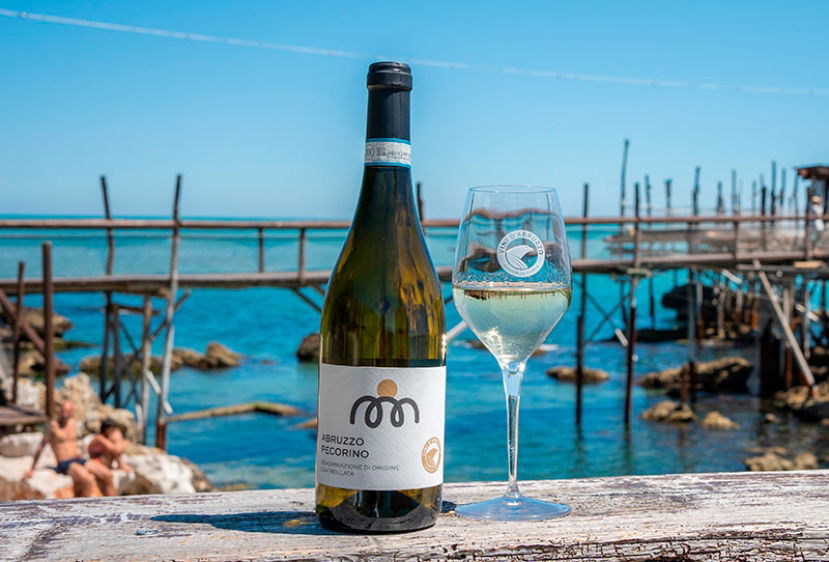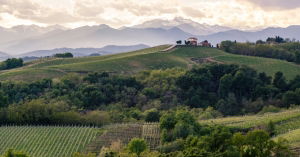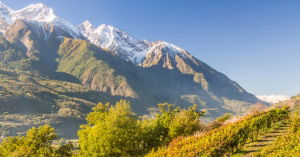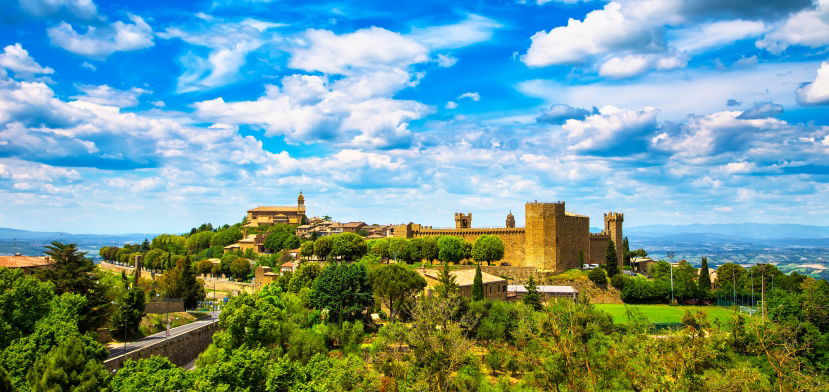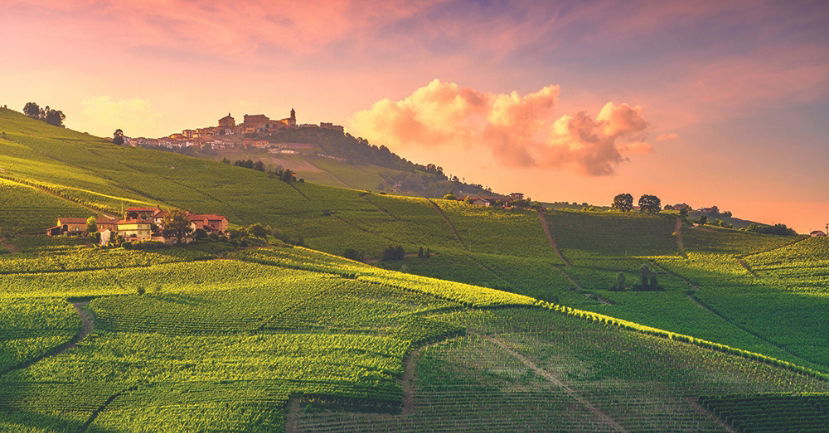BLOG
italian wine essentials
This article has been published in partnership with World of Fine Wine and Wine Scholar Guild.
A topsy-turvy 2019 Barolo growing season set many challenges for growers who produced wines that are classical in structure, with firm tannins and high acidity but less of the density and richness of recent warmer years, says Andrew Jefford, who was joined by Bruno Besa and Michael Palij MW.
The Italian wine world is full of wine-related terminology that many consumers struggle to understand. Learning the meaning of a few key terms can increase your confidence level and help you make informed decisions when selecting your next glass, or bottle, of vino. We have compiled a list of 25 common terms and phrases that we know will help you navigate the delicious world of vino Italiano!
Italy’s wealth of grape varieties presents wine connoisseurs with many tantalizing prospects, particularly on the red wine spectrum. While Sangiovese and Nebbiolo still reign supreme, numerous grape varieties have re-emerged from hiding in recent years to spellbind wine lovers around the world. In Italy, the story of how some of these grapes transitioned from obscurity to fashionably cool can be just as compelling as the wines themselves. In many cases, the wines from these grapes are shining in a way they never have before, thanks to more informed decisions in the vineyard and winery.
Here are five up-and-coming Italian red grapes to pay attention to. While all of these grapes have been around for centuries, their resurgence has meant a quality revolution and increased interest from the international marketplace.
While Italian red wines still garner much of the attention, there are, without doubt, many outstanding white wines that deserve consideration. While white wines like Soave, Verdicchio dei Castelli di Jesi or Fiano di Avellino, are already well-known, there are also lesser-known — but rightfully trending — Italian white grape varieties that today produce exciting wines worth seeking out.
Wine is fermented grape juice…in theory. However, in practice, modern wine may be made by using a wide array of compounds aimed at facilitating the winemaking process, enhancing the product’s organoleptic qualities, or simply fixing problems before or after they arise.
Summary
In this webinar we will explore the denomination of Garda DOC, the role of Lake Garda and its impact on the wines. The webinar will touch on the soils, climate, and history of this beautiful landscape. Students will come away with a better understanding of this Northern Italian denomination which encompasses 10 denominations from Valtènesi to Valpolicella, from the banks of the Mincio River to Verona, a vast area of 31,100 hectares in the provinces of Mantua, Brescia, and
Italy has a rich and diverse history of winemaking, old vines and traditional grape varieties that contribute to the country's ancient wine culture, which has evolved throughout the centuries.
Apart from the Côte d’Or in Burgundy, perhaps no other wine territory has been dissected in greater detail than the Barolo zone. This makes perfect sense, as these are arguably the two most ideal representations of the concept of terroir; just as Pinot Noir from one village in Burgundy reveals different flavors than that of another nearby hamlet, so too offerings of Barolo from various communes often display diverse characteristics, despite the fact that every wine here is made exclusively from Nebbiolo.
There are 11 approved communes in the Barolo production zone. For this article, we will deal primarily with the five largest: La Morra, Serralunga d’Alba, Monforte d’Alba, Castiglione Falletto and Barolo itself. The remaining six are Cherasco, Diano d’Alba (interestingly, planted more to Dolcetto than Nebbiolo), Grinzane Cavour, Roddi, Verduno and Novello; these last two are home to two of the most in-demand vineyards in the entire zone: Monvigliero in Verduno and Ravera in Novello.
When I first joined the wine industry some 16 years ago, I was thrown in at the deep end specialising in selling the world’s finest wines to the well-heeled customers of Northwest London. In those early days, one of the topics that frequently plunged me under the water was when I had to sound knowledgeable about Italian wines. In my first couple of weeks on the job I was given a great piece of advice by one of my seasoned veteran colleagues: if you know just one
Calabria, the rugged southern tip of Italy’s boot, is a region where ancient history and modern revival intertwine in compelling ways. Though long overshadowed by more famous Italian wine regions, Calabria possesses one of the most storied viticultural lineages on the peninsula. Over millennia, Calabria’s fortunes have risen and fallen, yet today a new generation of producers is bringing this historic region back into the spotlight, crafting wines that express both their deep roots and their contemporary aspirations.
Wine professionals and consumers share a similar aspiration when they visit a wine region; they want to enjoy the area’s best dining experiences so they can pair their favorite local wines with the territory’s typical food offerings.
While commonplace throughout Italy, this situation is nowhere more prominent than in Piedmont, especially in the region’s southern Langhe district. Lunch or dinner in the Barolo and Barbaresco production zones here is more than a simple pleasure; this is wine, and food pairing elevated to an art form.
When the Consorzio Brunello di Montalcino was established in 1967, one year after the wine received DOC status (it became one of the initial DOCG wines in 1980), there were only twenty-five members. Today, there are more than two hundred Brunello producers; given the reputation of this wine for its ability to age for twenty-plus years in the finest vintages, this is hardly surprising.
WSG is thrilled to collaborate with The San Francisco Wine School, a WSG Approved Program Provider, for a FREE 2-part educational series dedicated to the discovery of the wines of Abruzzo, Italy. These two online events will be hosted by Master Sommelier David Glancy, Andrea Eby, Italian Programs Director at Wine Scholar Guild, and a special guest from the region.
We invite you to come explore the unique history, terroir and to taste Abruzzo's most renowned signature white, rosé,
The best-known wines of Piemonte, such as Barolo, Barbaresco, Roero Arneis and Moscato d’Asti are produced from grapes grown in the southern sector of the region; this includes the province of Cuneo and Asti, in districts such as the Langhe and Roero. But farther north, Alto Piemonte is a territory that is home to some of the region’s most complex, yet least understood wines. Gattinara, Boca and Ghemme are a few of these selections, and these days, greater attention is being paid to these wines and this relatively unknown viticultural outpost.
Whether it is in the bilingual wine labels of Alto Adige, or the occasional Slavic grape name in Friuli Venezia Giulia, Italian wine often reveals the duality of culture present in some of the country’s border regions. Tucked into Italy’s northwestern corner, Valle d’Aosta certainly demonstrates this, as its language, cuisine and wine seem to have one foot in Italy and another in France.
The story goes that a couple of years ago, at a high society charity event in Milan a noted British rock star was served a sparkling wine that impressed him so much that he asked to be introduced to its producer who happened to be present at the event, and to whom he is reported to have said “This is the greatest Prosecco I’ve ever tasted”. The wine was in fact a metodo classico riserva made by one of Franciacorta’s top producers. The anecdote may be apocryphal, but it could easily be true. The big wide world (and not only – the misconception is also becoming common in Italy) has started to perceive anything Italian with bubbles as Prosecco, without distinction of origin or refermentation method.
Walking along the path that leads to the summit of the Cartizze hill, the town of Santo Stefano gradually emerges in the distance, its bell tower and a few quaint houses standing as a punctuation mark amidst the harmonious mosaic of woodland patches and vineyards.
Like real-life topographic contour lines, the intricately arranged, labyrinthine rows of Glera vines ascend and wind through the characteristic, humpy “hogback” hills. Ciglioni – small, narrow cultivated terraced plots that have been utilised here since at least the 17th century – lend rigour and a sense of order to the vegetative profligacy of this landscape.
When the Consorzio Brunello di Montalcino was established in 1967, one year after the wine received DOC status (it became one of the initial DOCG wines in 1980), there were only twenty-five members. Today, there are more than two hundred Brunello producers; given the reputation of this wine for its ability to age for twenty-plus years in the finest vintages, this is hardly surprising.
Wine Scholar Guild is pleased to provide its readers with vintage and harvest reports for some of Italy’s most famous regions, from 2010 onward. We felt it was time that we expand our assessment of vintages and harvest reports outside of France and Italy was first on our list. To compile this in-depth report, we reached out to Italian wine specialist Tom Hyland. Tom seemed like the perfect fit for this project, as he has been reporting on and promoting Italian wines for more than twenty years as a journalist, educator, and photographer. He has made more than 75 trips to wine regions throughout all of Italy from his home in Chicago. In that time, he has written for numerous publications, including Decanter, wine-searcher.com and most recently Wine Spectator. He has written two books on Italian wine: Beyond Barolo and Brunello (2013) and The Wines and Foods of Piemonte (2016). Tom has conducted seminars on Italian wine for the trade and public; over the past year, he has led more than two dozen webinars with Italian producers; among these were several for Wine Scholar Guild. He also served as US ambassador for Consorzio I Vini del Piemonte for five years. He is also an accomplished photographer, having been named Wine Photographer of the Year (Category: Places) in 2020 at the prestigious Pink Lady competition in England. Andrea Eby, Italian Programs Director, asked Tom to provide a short blog article describing how he went about compiling this fantastic resource. We hope you enjoy the article and find the vintage charts as useful as we do. As always, we look forward to your questions and comments!
For as long as Italians have eaten good food, they have enjoyed good wine. The country is the world’s second-largest wine producer and besides a few hiccups after the fall of Rome, has been a consistent leader in viticulture for centuries.


